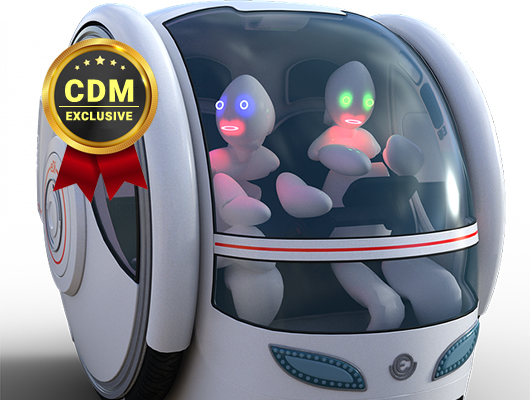Automotive Cyber Threats
By Okonkwo Noble, travel enthusiast, Writer, and Electrical Electronics Engineer, Limo services U.S.A
With the increasing reliance on technology in most global economic sectors, the transportation industry has experienced paradigm shifts like never before. The constant struggle for the topmost position concerning innovation in the automobile industry has led to the emergence of self-driving cars and electric vehicles.
These represent only a fraction of the effects of technology on the industry, perhaps, the most notable effects.
Self-driving cars are exactly what the name suggests—also referred to as autonomous vehicles, driverless vehicles, or robot cars. Self-driving vehicles use sensors, radars, GPS, and other technological platforms to commute effectively with little to no human intervention.
Thanks to these platforms, humans have been able to unlock a whole new level of comfort and exquisiteness. Depending on the automation level, we never have to worry about stress and fatigue, which are products of long drives.
Why Self-driving cars are important
The year 2020 was set to be the year for mass-deployment self-driving cars by most automotive giants. Tesla had tried to grab a huge market share by attempting a large scale release two (2) years earlier (2018). However, that did not exactly work out.
What makes these cars so important, and why is every significant player in the automotive industry giving this much attention to these driverless vehicles?
 While driving has indeed proven therapeutic for some, most of us would prefer extra minutes to take a final look at the document from last night, or perhaps a few minutes nap while on a commute to class.
While driving has indeed proven therapeutic for some, most of us would prefer extra minutes to take a final look at the document from last night, or perhaps a few minutes nap while on a commute to class.
Self-driving cars come with juicy pros regardless of pundit views.
For example, self-driving cars have proven to be an effective means of reducing road accidents. The resultant effect, a reduced number of casualties. Most car accidents are resultant effects of human error. Therefore, it only makes sense that technology, which is less susceptible to mistakes, be used instead to mitigate these unfortunate occurrences.
These cars use ADS technology to ensure road safety and to alert drivers of potential dangers.
Self-driving cars also help to reduce traffic congestions and are widely acknowledged for being eco-friendly. They help to reduce environmental pollution by reducing car emissions since most of these vehicles are electric.
Self-driving cars and cybersecurity
While self-driving vehicles boast of multiple advantages, as with most innovations, it brings forth its own set of challenges. One of the major problems has to do with cyber threats.
Since self-driving cars use the Internet of Things (IoT), software algorithms, IoT connectivity, and other technology-dependent on the Internet, they are highly susceptible to cyber threats. They are essentially internet cars, and all the security challenges faced by internet users equally apply to them.
Protecting your self-driving car from potential Cyber-threats
Completely disregarding the importance of self-driving vehicles due to their potentially high susceptibility to cyber threats may be likened to throwing the baby along with the bathwater.
While it is true that with increased technology comes increased risks of cyber threats, it’s possible to mitigate cybercrimes by implementing preventive measures.
 The first step towards protecting your self-driving car from potential cyber threats is by keeping your passwords safe. You may need to activate features such as two-factor authentication to mitigate the risks of cyber threats further.
The first step towards protecting your self-driving car from potential cyber threats is by keeping your passwords safe. You may need to activate features such as two-factor authentication to mitigate the risks of cyber threats further.
Automated cars, like your personal computers, are personalized and are made to be accessed by authorized individuals only. One easy way for hackers to perpetuate their criminal activities is to get a hold of your passwords.
To ensure that you’re not giving cyber criminals easy access to your automated vehicle, be sure not to share your passwords with anyone. Also, ensure that your passwords are strong enough by meeting the minimum suggested password length and combination suggestions.
Another way to protect your self-driving car from potential Cyber threats is by purchasing your automated cars from credible sources. Some manufacturers are known to take cybersecurity more seriously than others. These manufacturers will provide all the necessary security apparatus to curb cyber threats.
It’s always important to understand the values that drive your car manufacturer, and ensure that all security measures to forestall cybercrimes against your car are made available by the manufacturer.
Also, regularly update the applications (OTA) on your automated car system as frequently as required. The new updates usually come with increased and updated security measures to frustrate cybercriminals’ activities.
The use of dedicated short-range secured communication channels (DSRC) also reduces the risk of cyber threats. However, this poses certain challenges since the encryption of the data would result in additional production/maintenance costs.
Conclusion
It’s important to note that cyber threats cannot cease to exist. They can only reduce. Therefore, all self-driving car users are encouraged to actively lookout for potential cyber threats and report any successful threats to the relevant authorities.
About the Author
 Okonkwo Noble understands the need for sustainable travel. He is a foremost travel enthusiast, Electrical Electronic Engineer, and adventurer. He also volunteers as a part-time English teacher for Internally displaced children.
Okonkwo Noble understands the need for sustainable travel. He is a foremost travel enthusiast, Electrical Electronic Engineer, and adventurer. He also volunteers as a part-time English teacher for Internally displaced children.
He’s a writer for Limo Services USA.
Okonkwo can be reached online at our company website https://limoservicesusa.com/


